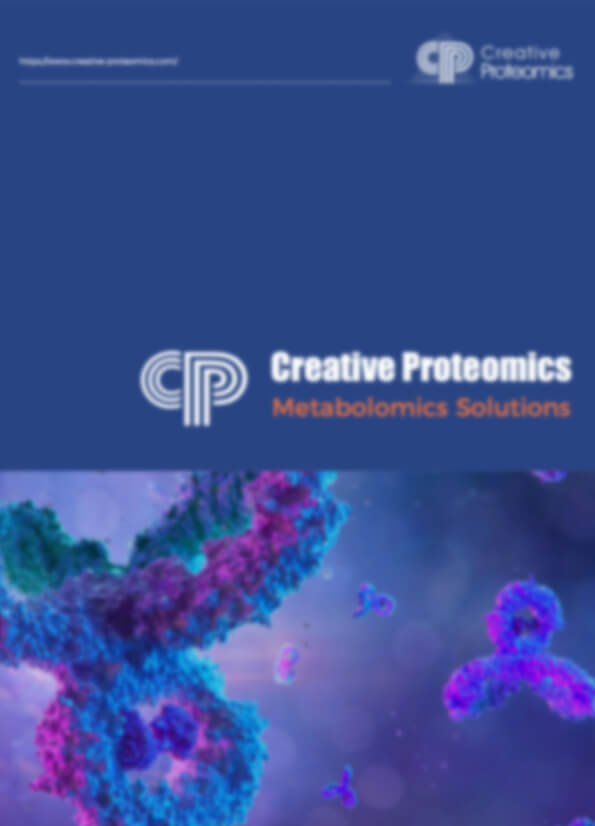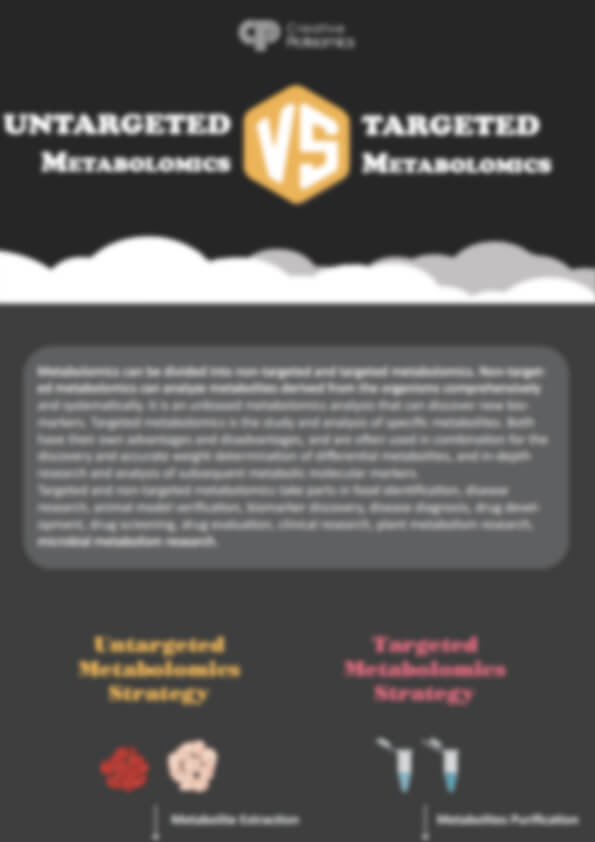Glyoxylic Acid Analysis Service
Creative Proteomics provides precise and reliable glyoxylic acid analysis using advanced LC-MS/MS, GC-MS, and HPLC-UV technologies. Our comprehensive services include quantitative and qualitative analysis, metabolic pathway investigation, isotope labeling studies, and stability assessments. We help researchers and industries monitor metabolic activities, optimize bioprocesses, ensure product quality, and conduct environmental analysis with accurate data and fast turnaround times.
Submit Your Request Now
×- What We Provide
- Advantages
- Technology Platform
- Sample Requirements
- FAQ
- Publications
What is Glyoxylic Acid?
Glyoxylic acid (chemical formula: OCHCO₂H), also known as oxoacetic acid, is a key C2 carboxylic acid with both aldehyde and carboxylic acid functional groups. In aqueous solutions, it predominantly exists as a hydrate (HO)₂CHCO₂H, forming glyoxylate—a critical intermediate in the glyoxylate cycle, an essential metabolic pathway in plants, bacteria, and fungi. This compound is pivotal in biochemical research, industrial synthesis (e.g., pharmaceuticals, cosmetics), and environmental monitoring due to its reactivity and role in metabolic regulation.

Glyoxylic Acid Analysis Service Offered by Creative Proteomics
- Glyoxylic Acid Quantitative Analysis – Accurate measurement of glyoxylic acid concentrations using validated analytical methods.
- Glyoxylic Acid Qualitative Profiling – Comprehensive profiling of glyoxylic acid and associated metabolites.
- Metabolic Pathway Analysis – Identification and quantification of metabolites involved in glyoxylate cycle pathways.
- Isotope Labeling Studies – Analysis of metabolic flux using isotope-labeled glyoxylic acid.
- Stability and Degradation Studies – Monitoring glyoxylic acid stability under various conditions.
- Comparative Analysis – Evaluation of glyoxylic acid levels across different sample types.
Detected Glyoxylic Acid-Related Metabolites
| Category | Detected Compounds | Biological Pathways |
|---|---|---|
| Glyoxylic Acid and Derivatives | Glyoxylic Acid, Glycolic Acid, Oxalic Acid | Glyoxylate Cycle, Photorespiration Pathway |
| Glyoxylate Cycle Intermediates | Isocitrate, Malate, Succinate, Fumarate, α-Ketoglutarate | Glyoxylate Cycle, Citric Acid Cycle |
| Amino Acid Derivatives | Glycine, Serine, Alanine, Threonine, Aspartate, Glutamate | Glyoxylate Cycle, Amino Acid Biosynthesis Pathways |
| Organic Acids | Citric Acid, Pyruvic Acid, Lactic Acid, Formic Acid, Acetic Acid | Citric Acid Cycle, Fermentation Pathways |
| Coenzymes and Redox Compounds | NAD+, NADH, FAD, FADH2, Coenzyme A | Electron Transport Chain, Glyoxylate Cycle |
| Photorespiration Intermediates | Phosphoglycolate, Glycolate, Glycerate | Photorespiration Pathway, Calvin Cycle |
| Fatty Acid Metabolism Compounds | Acetyl-CoA, Malonyl-CoA, Propionyl-CoA | Beta-Oxidation, Glyoxylate Cycle |
| Plant-Specific Metabolites | Tartronate, Tartaric Acid, Ascorbic Acid | Plant Stress Response, Glyoxylate Cycle |
| Microbial and Environmental Markers | Formate, Methanol, Ethanol, Lactate, Acetate | Microbial Fermentation, Environmental Monitoring |
Advantages of Glyoxylic Acid Assay
- High Sensitivity: Detection limits as low as 0.1 ng/mL using LC-MS/MS and 0.5 ng/mL with GC-MS.
- Exceptional Accuracy: Quantification with R² values of 0.999 and recovery rates between 95%-105%.
- Comprehensive Coverage: Detect over 50+ metabolites related to glyoxylic acid pathways.
- Advanced Instrumentation: Equipped with Thermo Fisher Q Exactive HF-X and Agilent 7890B GC-MS for ultra-high resolution.
- Custom Solutions: Flexible analysis methods with detection ranges from 0.1 ng/mL to 100 µg/mL.
- Fast Turnaround: Standard results within 10-15 business days and expedited options available.
- Reliable Quality Control: Certified reference materials and strict QC ensure accuracy within ±2%.
Technology Platform for Glyoxylic Acid Analysis Service

Q Exactive™ Plus Hybrid Quadrupole-Orbitrap™ Mass Spectrometer (Figure from Thermo)
GC-MS (Gas Chromatography-Mass Spectrometry)

Agilent 7890B-5977B (Figure from Agilent)
HPLC-UV (High-Performance Liquid Chromatography with UV Detection)

Agilent 1260 Infinity II HPLC (Figure from Agilent)
Sample Requirements for Glyoxylic Acid Analysis Service
| Sample Type | Minimum Volume / Weight | Storage Conditions | Notes |
|---|---|---|---|
| Serum / Plasma | 100 µL | -80°C | Collect in anticoagulant-free or EDTA tubes |
| Urine | 500 µL | -80°C | Avoid preservatives, store immediately |
| Cell Culture Supernatant | 1 mL | -80°C | Centrifuge to remove cells, store supernatant only |
| Tissue (Animal / Plant) | 50 mg (wet weight) or 20 mg (dry) | -80°C or Liquid Nitrogen | Freeze immediately after collection |
| Fermentation Broth | 2 mL | -80°C | Filter or centrifuge to remove solids |
| Plant Extracts | 1 g (wet weight) or 0.5 g (dry) | -80°C or Liquid Nitrogen | Provide detailed extraction method if applicable |
| Cell Pellet | ≥1 × 10⁶ cells | -80°C | Wash with PBS, remove supernatant, and freeze |
| Culture Medium | 2 mL | -80°C | Ensure sterile collection, avoid contamination |
| Environmental Water Samples | 50 mL | 4°C (Short-term) / -20°C (Long-term) | Filter to remove particles before storage |
Applications of Glyoxylic Acid Assay Service
Metabolic Pathway Analysis
Investigate glyoxylate cycle and related biochemical pathways.
Microbial Metabolic Engineering
Optimize glyoxylate shunt pathways in engineered bacteria for biofuel production.
Plant Stress Response Studies
Evaluate glyoxylate cycle activity in plants under drought, salinity, or nutrient deficiency.
Food Science Research
Analyze glyoxylic acid as a byproduct in fermented foods or preservative degradation.
Industrial Synthesis Monitoring
Track glyoxylic acid yield in chemical reactions (e.g., glyoxal oxidation for pharmaceutical intermediates).
Environmental Biomonitoring
Assess microbial glyoxylate metabolism in soil/water ecosystems to study carbon flux.
Demo
FAQ of Glyoxylic Acid Analysis Service
How do you distinguish glyoxylic acid from structurally similar compounds like glyoxal or oxalic acid?
Our HPLC-RID method (Agilent 1260 Infinity II System) separates glyoxylic acid from glyoxal, oxalic acid, and other interfering metabolites based on retention time and refractive index profiles. Glyoxal does not react with tryptophan in our spectrophotometric assays, ensuring specificity.
Can I submit samples containing organic solvents (e.g., ethanol) for analysis?
Yes. We validate methods for matrices with organic solvents (e.g., industrial mixtures). Samples must be filtered (0.22 µm) to remove particulates and stored at 4°C to prevent degradation.
What is the minimum sample volume required for plant tissue analysis?
Plant tissues require 50–100 mg fresh weight. Snap-freeze samples in liquid nitrogen and homogenize in PBS (pH 7.4) to ensure metabolite stability.
How stable is glyoxylic acid in biological fluids during storage?
Glyoxylic acid in urine or serum is stable for up to 4 weeks at -80°C. Avoid repeated freeze-thaw cycles, as this may degrade the analyte.
Do you provide kinetic data for glyoxylic acid metabolism in microbial studies?
Yes. Custom reports include pathway flux analysis (e.g., glyoxylate cycle activity) and kinetic parameters (e.g., reaction rates) for metabolic engineering applications.
Can your service analyze glyoxylic acid in cosmetic formulations?
Absolutely. We validate methods for glyoxylic acid quantification in hair-straightening products, ensuring compliance with purity standards (detection limit: 0.5 µg/mL) .
How do you handle samples with high salt concentrations?
High-salt samples (e.g., industrial mixtures) undergo desalting via solid-phase extraction (SPE) prior to HPLC-RID analysis to prevent column fouling.
Is there interference from glycolic acid in your assays?
No. Our spectrophotometric assays (modified Hopkins-Cole reaction) selectively detect glyoxylic acid, even in mixtures containing glycolic acid or ethylene glycol.
Can you quantify glyoxylic acid in environmental water samples?
Yes. We analyze aqueous samples (e.g., soil leachates) with a detection limit of 0.0019 M. Filter samples through 0.22 µm membranes and store at 4°C.
Do you support method customization for novel matrices?
Yes. We develop tailored protocols for complex matrices (e.g., fermentation broths) within 7–10 business days, including method validation and recovery tests.
Learn about other Q&A.
Glyoxylic Acid Analysis Service Case Study
Publications
Here are some of the metabolomics-related papers published by our clients:

- A non-probiotic fermented soy product reduces total and ldl cholesterol: A randomized controlled crossover trial. 2021. https://doi.org/10.3390/nu13020535
- Resting natural killer cell homeostasis relies on tryptophan/NAD+ metabolism and HIF‐1α. 2023. https://doi.org/10.15252/embr.202256156
- Enhance trial: effects of NAD3® on hallmarks of aging and clinical endpoints of health in middle aged adults: a subset analysis focused on blood cell NAD+ concentrations and lipid metabolism. 2022. https://doi.org/10.3390/physiologia2010002
- Function and regulation of a steroidogenic CYP450 enzyme in the mitochondrion of Toxoplasma gondii. 2023. https://doi.org/10.1371/journal.ppat.1011566
Reference
- Judah, Lamis, et al. "DNA damage by oxo-and peroxo-chromium (v) complexes: Insight into the mutation and carcinogenesis mechanisms." Toxicology Research 3.1 (2014): 56-66. https://doi.org/10.1039/c3tx50061f











